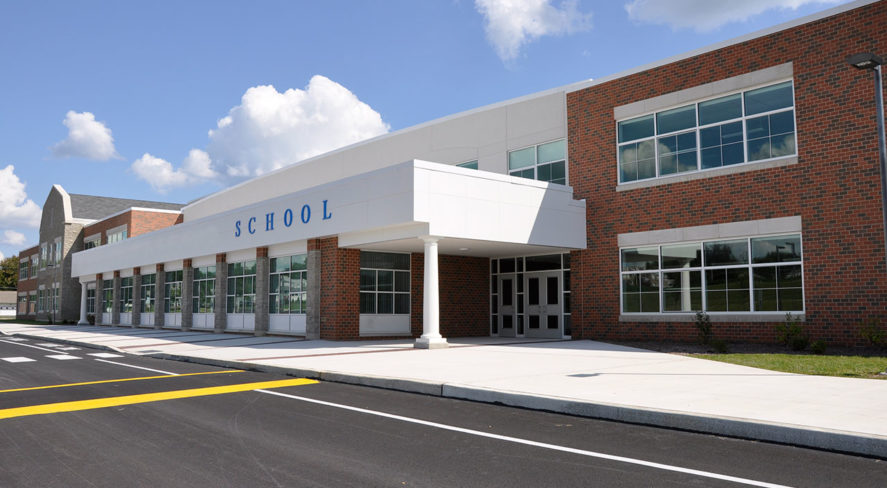Member Perspective: The Rise of Indoor Gunfire Detectors


Indoor gunfire detection has long been a high-value but high-priced addition to a complete security solution. Fortunately, we are reaching a nexus of technology and demand that will remove the largest barriers to entry. As converging market forces and shifting security priorities make such systems as essential as smoke detectors, the next generation of gunfire detection will provide affordable, unobtrusive and potentially life-saving monitoring, detection and alerting.
Statistically, the probability of an active shooter event occurring at any given location is quite small. Even so, the devastation active shooters cause is so horrific that being prepared for such events demands attention and resources. A recent survey of top security decision makers representing a wide range of workplaces, including schools, offices, retail spaces, places of worship, manufacturing facilities and utilities, reported that an active shooter scenario was the physical security threat that concerned them most.
In fact, Section 5 of the Occupational Safety and Health Act (OSHA) requires employers to furnish workplaces that are “free from recognized hazards that are causing or are likely to cause death or serious physical harm.” Sadly, active shooters are a “recognized hazard” for many types of work environments. Failure to implement sufficient risk mitigation programs can result in significant fines from OSHA, as well as legal liability for injuries and deaths resulting from an attack.
In response, as today’s systems integrators sell the value of technologies like video surveillance, access control, security screening, emergency communication systems and visitor management, they are including information about how these solutions can perform in an active shooter scenario to help mitigate risk and reduce harm; however, conversations regarding indoor gunfire detection solutions have been reserved for only the most high-profile, well-funded projects.
The historically high price for such systems is multifaceted. For effective coverage, a high number of detectors must be deployed throughout a property, and the price adds up quickly. Labor-intensive monitoring and alert notification services that support these systems are expensive. Unlike many security technologies whose cost can be justified for the many day-to-day use cases in which they deliver value, most gunshot detection systems will never, hopefully, need to alarm and notify. These compounding concerns make budgeting for their high price even harder to justify.
The adoption of the Internet of Things (IoT) and cloud computing in other industries has brought a new wave of low-cost hardware powered by incredibly powerful backends. This architecture, when applied to indoor gunshot detection, can be paired with cutting edge artificial intelligence (AI) engines to enable a new generation of systems; systems that will redefine the capabilities and pricing of hardware sensors, software, installation and monitoring.
For gunfire detection systems, sensors that leverage the cloud to process and analyze their signals can completely eliminate the need for additional overhead hardware on-site. New detectors, as small and inconspicuous as the smallest of smoke detectors, can be sold for hundreds, rather than thousands, of dollars each. The cloud facilitates robust mobile and web-based management software and installation tools, offering all the advantages of a software-as-a-service model with minimal upfront costs and reasonable annual service fees. Installation costs are minimized, due to simplified network requirements and “plug and play” connectivity of IoT sensor devices that can be programmed and mapped from a mobile device or browser. Continuously-improving AI powered by cloud computing allows for constant adaptation and improvement of gunfire analysis, reducing or eliminating the need for human involvement for monitoring and throughout the alert notification sequence.
Technologies rooted in government and military applications have limited the accessibility of gunfire detection systems. As the headlines continue to be written and the question continues to be raised, actions must be taken to open up that access. IoT and cloud computing continue to grow in their maturity and ubiquity, and they offer a lifeline to this previously stifled sector. The ability to process a large number of high-speed, high-precision inputs no longer has to drive up the cost of every device in the system. Instead, each device can act as a simple extension of the unlimited power in the cloud.
As the cost of indoor gunfire detection systems ceases to be an obstacle, responsible stakeholders must consider inclusion of such technology as part of a comprehensive active shooter security plan. Most have already invested in physical security technologies to harden their facilities. Now it is time to focus on strategies to save as many lives as possible, should an attack occur. A gunfire detection system can notify authorities within seconds of the first trigger pull and equip first responders with actionable intelligence to deploy immediately on site. Studies show that for every minute that victims wait for treatment, survival is 10% less likely. By eliminating valuable minutes before 911 is contacted and providing clear and concise data of the gunman’s location, number of shots fired and type of weapon, gunfire detection systems can potentially slash the duration of a mass shooting in half.
A recent study by The Hartford of over 1 million of its small business policies showed that in a five-year period, twice as many customers made insurance claims for loss due to theft than for fire. Despite this, the use of camera systems – which can deter and help resolve cases of theft – reduces insurance premiums, while smoke detectors are legally required in every room and hallway of all commercial buildings. One explanation for this is obvious; smoke detectors can help save lives and do so at a price point that’s affordable for any size organization. Workplaces can’t afford NOT to have them.
Another explanation is the size of the risk. The risk of an active shooter, much like the risk of a fire, is an area risk. A fire anywhere in the building is a problem for the entire building. The same is true for an active shooter. If one area of a building has no smoke detectors the building is considered unsafe. Maximizing coverage and minimizing response time is critical to an effective system deployment. Combining full coverage with accurate real-time information allows for real-time response, so planning an approach no longer becomes a guessing game for first responders.
Newer systems that tie directly to 911 call centers or public safety answering points ensure that information flows freely to 911, which allows those first on the scene to quickly get their bearings and put a plan into action. On campuses of more than one building this can have a profound impact on the duration of an event. Requiring the search of every building or every floor of a building can take an incredible amount of time even when executed by a highly skilled team. Providing a way to prioritize those locations with accurate and unbiased information not only allows the situation to be contained. This information can also be used to make informed decisions on the safest areas and route innocent bystanders.
Extending these systems with integrations to video, mass notification, access control and more can give a complete active shooter response plan with minimal dependence on any one individual’s actions. Active shooter situations present a level of chaos for which it is difficult to train and prepare, and we have seen in the past how a plan can fall apart at first contact. Having as much of the response as possible executed through these automated integrations can free up personnel to handle other duties.
The next generation of indoor gunfire detection systems bring a lot to the table. Given their ability to help save lives, with only a small incremental increase in security budgeting, they’ll soon be an indispensable element of every active shooter technology plan.
John Anderson is chief technology officer of Safe Zone Technologies, Inc. – the provider of Safe Zone Gunfire Detection Systems.
The views and opinions expressed in guest posts and/or profiles are those of the authors or sources and do not necessarily reflect the official policy or position of SIA.
